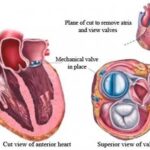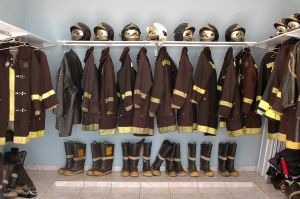Nosocomial Bacterial Meningitis
Recently, the New England Journal of Medicine ran an interesting article reviewing nosocomial bacterial meningitis, or bacterial meningitis caused by a hospital intervention such as brain surgery. As microbial resistance becomes more common, it is ever more important to consider a nosocomial source for an infection in a hospitalized patient, or a patient with a CNS shunt or past history of brain trauma.
Patients undergoing a craniotomy may develop a nosocomial bacterial meningitis weeks after the procedure, in fact approximately a third of cases of nosocomial bacterial meningitis occur two weeks after the craniotomy, some cases are even reported to occur years after the operation. Intraventricular shunts, extraventricular shunts, and external lumbar catheters are unsurprsingly another cause of nosocomial bacterial meningitis.
Lumbar tap is rarely a cause of bacterial meningitis, occurring in perhaps as few as 1 in 50,000 cases.
Head trauma is another source of meningitis, especially open compound cranial fractures. Compound fractures depressed greater than the thickness of the cranium are considered more severe and the wound should be debrided if necessary, and carefully examined, in addition to the initiation of antibiotics prophylaxtically. Most patients with closed head trauma who develop a nosocomial bacterial meningitis have a basillar skull fracture, which then communicates with the sinuses and can lead to recurrent episodes of meningitis.
Obviously, the suspected source of the infecting organism is important when decided upon initial antibiotic coverage.
Clinical Features:
1. Changes in mental status, most common symptom, may be masked by the patient’s condition.
2. Low grade fever, general malaise. Signs of meningeal irritation seen in less than half of patients.
Diagnostic Tests
1. CSF – cell count, gram stain of fluid, protein, glucose, cultures, lactate may be helpful as well. Obviously, cell culture results often come back well after empiric therapy should have been started. CSF may be normal in the case of ventricular meningitis and non-communication between ventricles and lumbar areas due to obstructing hydrocephalus.
2. CT scan multi-slice w/ multiplanar imaging to locate a CSF leak, may also identify mass which is important to exclude before CSF,
Treatment:
Again depends heavily on the suspected source. The New England Journal review article goes into a variety of antibiotic considerations concerning antibiotic choice. Initial antibiotic therapy, for example, for neurosurgical patients and patients who have been hospitalized for a prolonged period for penetrating head trauma and/or basilar fracture is vancomycin and a choice of cefepime, meropenem, or ceftazidime.
Treatment can later be tailored to CSF culture results. The presence of multi-drug resistant gram-negative organisms, and other factors may change the antibiotic choice. Specifically, acinetobacter species are becoming a major player in bacterial nosocomial meningitis, with some doctors resorting to the use of intravenous and intrathecal colistin to cure patients.
It appear that generally in the case of catheter associated bacterial meningitis, the removal of the catheter and prompt treatment with antibiotics improves outcome.
Prevention: The article touched upon a variety of preventive procedures which can be used, such as during lumbar puncture and neurosurgical procedures using double gloving, which can be used to decrease the incidence of nosocomial bacterial meningitis by changing gloves before handling catheter material to be implanted in the CNS. Doubtlessly, as antibiotic resistance grows, new protocols will be developed to decrease the incidence of nosocomial meningitis. Indeed, the use of check-lists may become much more common in medicine as a way of uniformly decreasing antibiotic resistance and nosocomial infections such as nosocomial bacterial meningitis.
Sources:
Nosocomial Bacterial Meningitis
Diederik van de Beek et. al.
Review Article



